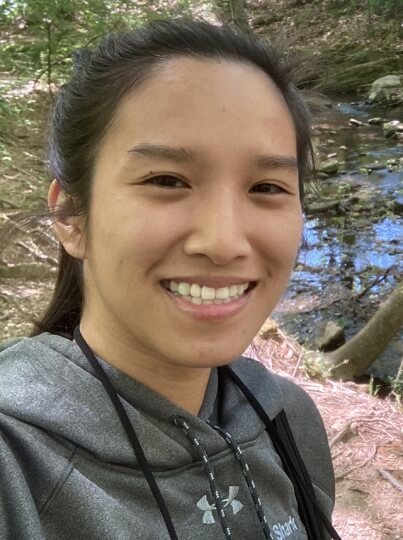Stephanie Manivanh almost didn’t become an engineer.
She spent her freshman year at Harvard pursuing biology prerequisites and planned to become a doctor. But after a summer internship at the Concord Field Station, a biomechanical research laboratory, Manivanh realized her passion lay in the hands-on nature of mechanical engineering.
Slightly panicked, she met with Chris Lombardo, Associate Director of Undergraduate Studies in Electrical Engineering and Mechanical Engineering, on the second day of her sophomore year. The two identified a singular academic path she could follow to graduate on time with an S.B. in mechanical engineering.
“I had always been a really hands-on person. My dad’s father was a mechanic, and he knew a lot about cars, so even from a young age I was exposed to physics of that sort,” said Manivanh, S.B. ’16. “I remember, we were changing a tire together, and he told me, ‘Stephanie, I need you to step on this lever at this exact spot, because you weigh 50 pounds and that is exactly how much weight I need to tighten the bolts.’”
As she dug deeper into mechanical engineering at the John A. Paulson School of Engineering and Applied Sciences, Manivanh put her experience working on cars to good use.
She joined the MIT Formula SAE Team, where she and a group of Harvard and MIT students met every Saturday to build a formula-style racing cart.
“That experience was really fun and it was one of my most hands-on experiences,” she said. “It was entirely self-driven by students outside of school, and it really showed me that I loved engineering.”
Poised to graduate, Manivanh was conflicted about what career to pursue. She was keen to avoid a rigid corporate structure and wanted opportunities to flex her engineering muscles and apply her analytical skills to new problems.
She found the perfect fit at appliance maker SharkNinja, which she joined as a quality engineer. She led quality control for new appliances and spearheaded consumer testing to obtain important insights on product specifications.
Once the product was released, she led quality checks and ensured that any engineering issues her team identified were baked back into the production cycle to ensure the products kept improving.
Manivanh poses with her first launched product at Target in 2017, a Ninja Coffee Maker.
“I remember when I first worked in new product development, when the product finally launched, I went to Target to take a picture with it because I was so proud. After a year of toiling, it finally hit the market,” she said. “Being able to provide something that is of value to the customer is really rewarding.”
Manivanh has now taken on a host of new challenges as director of quality assurance operations for SharkNinja. She recently relocated to Hong Kong where she is working with Asian manufacturers to ready facilities for mass production.
Manivanh works to ensure appropriate resources are in place, that documentation and work instructions are ready for the operators, and that the supply chain is prepared to support the new operation once it hits mass production.
“Making sure we can take our existing process and the way that we function and translate that into new countries is a challenge,” she said. “It is critical we make sure everyone is on the same page, but that can be difficult sometimes because we are interacting with people from different parts of the world, so it is important to make sure we are really clear with each other.”
Balancing so many different elements, from supply chains to manufacturing processes to product documentation, keeps Manivanh on her toes.
While working from home due to COVID-19, Manivanh has received shipments of products at her apartment for testing.
And having experience on the new product development side helps her anticipate potential quality issues before they crop up, she said.
“You really don’t understand what goes into solving the problem until you actually come to the factory and experience what it takes to fix issues for yourself,” she said. “I’m able to actually understand more broadly how the organization comes together to bring that product to market, in terms of infrastructure.”
She’s looking forward to diving deeper into global manufacturing challenges and opportunities as the company brings new products to market.
Looking back, the engineering skills and the confidence she developed at SEAS have helped her succeed in each role she’s held at SharkNinja.
“One thing I learned at SEAS is how to prioritize my work,” she said. “Having just one narrow path to graduation, I had a few five-course semesters, so I had to pre-plan all of my work. It forced me to be more organized, and that has been really helpful at SharkNinja. When you are dealing with a process that outputs millions of units per year, you have to prepare for everything.”


